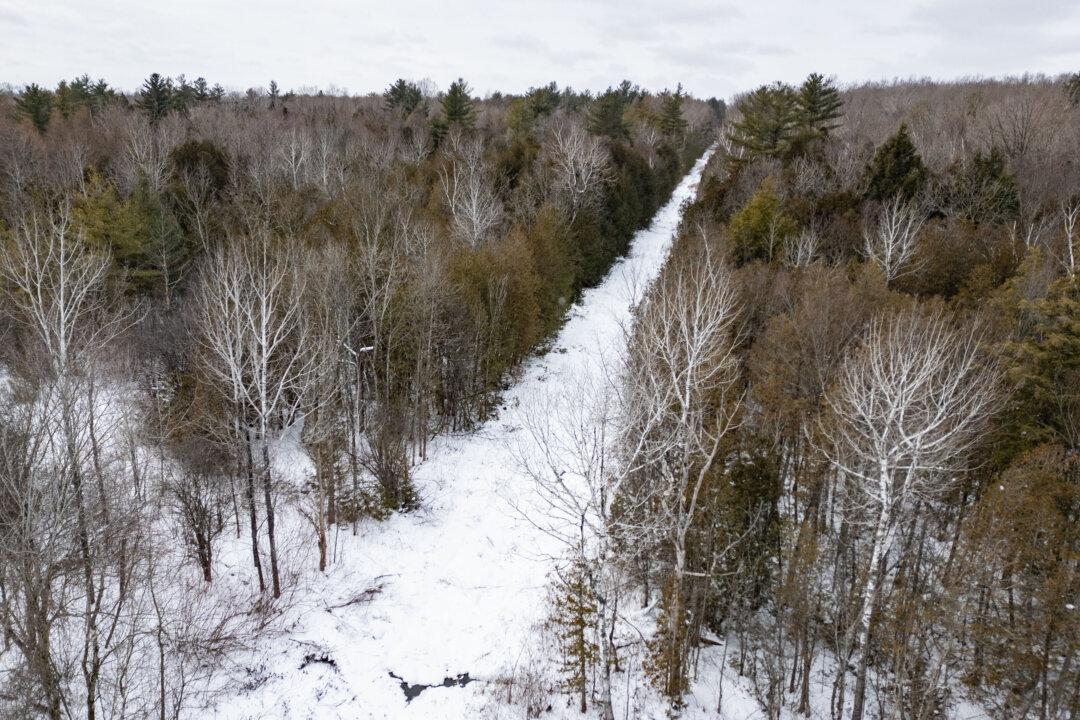HALIFAX—An ambitious plan in Nova Scotia to build North America’s first coastal refuge for captive whales is at least five years behind its original schedule, newly released documents show.
The project, announced in February 2020, calls for construction of a 40−hectare underwater enclosure that would provide a natural environment for beluga and orca whales retired from marine parks. It would be as large as 50 football fields and about 300 times larger than the biggest captive whale tanks.
Organizers behind the U.S.−based Whale Sanctuary Project had originally predicted the site on Nova Scotia’s rugged eastern shore could be ready to receive whales this year.
But the COVID−19 pandemic, regulatory hurdles and environmental concerns have slowed the project’s progress, according to documents obtained by The Canadian Press under the province’s freedom of information law.
An internal government presentation prepared in May 2021 says that once the project is granted a Crown lease for a small cove and some land south of Port Hilford, N.S., it would take at least another five years before the site is ready to accept whales. That pushes the start date to 2027.
Charles Vinick, executive director of the non−profit Whale Sanctuary Project, said the government’s timeline is flawed because it includes construction of an interpretive centre, which won’t happen until after the whales arrive. The group’s own timeline now has a late 2023 start date, though Vinick said 2024 is more likely.
The pandemic is largely to blame for slowing down the project, but Vinick also pointed to a demanding provincial permitting process.
“It’s brand new ground for them and brand new ground for us,” he said in an interview from his home in Santa Barbara, Calif. “We have to focus on moving forward every day.”
As an example, he cited his group’s plan to extract small core samples from submerged soils for testing. A permit application was filed in April, but it took almost five months for the Department of Natural Resources to decide that an archeological assessment was required before the testing could start.
“These things do come up, and I suspect there will be more,” Vinick said. “But every time one comes up, we’re going to do it.”
The documents also point to serious concerns about 20 abandoned mine shafts and contaminated tailings left behind from nearby gold mines that operated between 1862 and 1900.
The sanctuary project says recent work has identified some shafts that remain unfilled on or near land that the project plans to occupy, and soils throughout the property have been analyzed. More testing will determine whether any areas require mitigation.
“All mitigation requirements that will be assessed, we will meet,” Vinick said. “We’re not going to do anything to jeopardize the health of the whales.”
On another front, the documents show that Nova Scotia’s Environment Department was concerned about nearby wetlands, and the federal Department of Fisheries wanted to know what kind of animals would be admitted to the refuge to allow officials to prepare for disease mitigation and an application under the Species at Risk Act.
As for the 40−hectare enclosure — to be surrounded by underwater nets — it will be designed to hold eight to 10 beluga whales and two to three orcas in a separate area. The animals will not be returned to the wild because of their lack of survival skills.
The $20−million project, which will rely on private donations for support, also calls for the construction of a veterinary clinic, observation tower and other support buildings. Another $2 million would be needed annually for operations. A visitor centre was opened last year.
About 200 belugas and 50 orcas are being kept in marine parks and aquariums around the world. The Marineland Park in Niagara Falls, Ont., has about 35 belugas and Canada’s lone captive killer whale, Kiska.
“None of this work can happen soon enough for the whales who are languishing in concrete tanks and are subject to intolerable conditions,” the group said in an online post last month.
“Yet it is essential to get everything right for the health and safety of those very whales when they are introduced to an entirely new life. It is also the law.”





